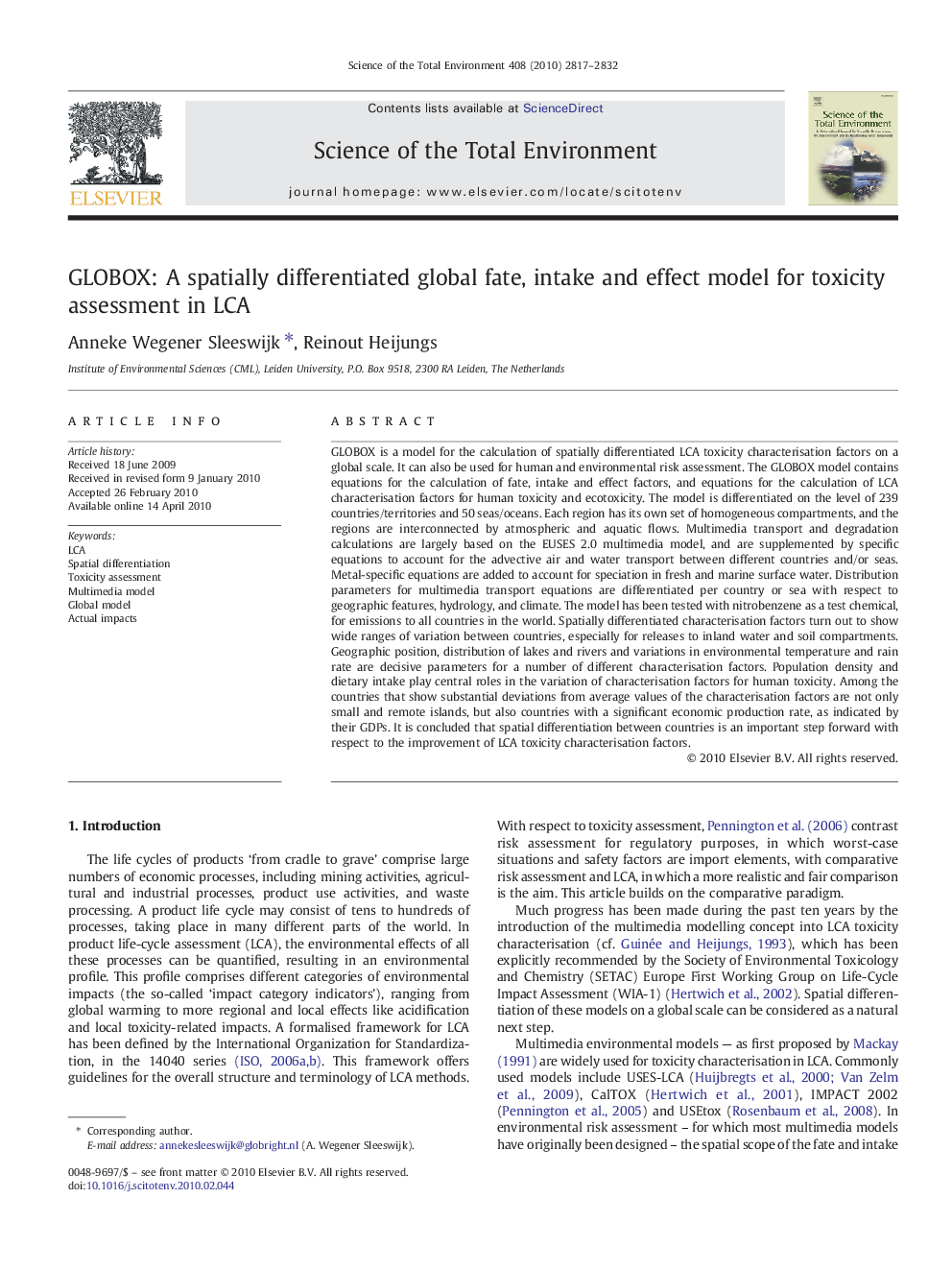| کد مقاله | کد نشریه | سال انتشار | مقاله انگلیسی | نسخه تمام متن |
|---|---|---|---|---|
| 4430399 | 1619872 | 2010 | 16 صفحه PDF | دانلود رایگان |

GLOBOX is a model for the calculation of spatially differentiated LCA toxicity characterisation factors on a global scale. It can also be used for human and environmental risk assessment. The GLOBOX model contains equations for the calculation of fate, intake and effect factors, and equations for the calculation of LCA characterisation factors for human toxicity and ecotoxicity. The model is differentiated on the level of 239 countries/territories and 50 seas/oceans. Each region has its own set of homogeneous compartments, and the regions are interconnected by atmospheric and aquatic flows. Multimedia transport and degradation calculations are largely based on the EUSES 2.0 multimedia model, and are supplemented by specific equations to account for the advective air and water transport between different countries and/or seas. Metal-specific equations are added to account for speciation in fresh and marine surface water. Distribution parameters for multimedia transport equations are differentiated per country or sea with respect to geographic features, hydrology, and climate. The model has been tested with nitrobenzene as a test chemical, for emissions to all countries in the world. Spatially differentiated characterisation factors turn out to show wide ranges of variation between countries, especially for releases to inland water and soil compartments. Geographic position, distribution of lakes and rivers and variations in environmental temperature and rain rate are decisive parameters for a number of different characterisation factors. Population density and dietary intake play central roles in the variation of characterisation factors for human toxicity. Among the countries that show substantial deviations from average values of the characterisation factors are not only small and remote islands, but also countries with a significant economic production rate, as indicated by their GDPs. It is concluded that spatial differentiation between countries is an important step forward with respect to the improvement of LCA toxicity characterisation factors.
Journal: Science of The Total Environment - Volume 408, Issue 14, 15 June 2010, Pages 2817–2832